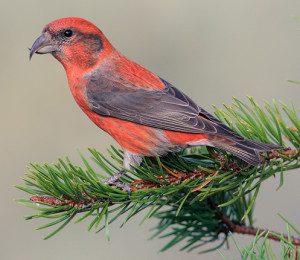This is New Hampshire Audubon’s Rare Bird Alert for Monday, July 6th, 2020.
During the Corona virus outbreak NH Audubon encourages you to enjoy birding safely; please follow travel and social distance recommendations from state and federal authorities.
An ACADIAN FLYCATCHER was seen and heard at the marsh on Gile Road near the junction with Route 152 in Lee on July 3rd, 4th, and 5th.
A SANDHILL CRANE continues to be seen on private property in Errol and was last reported on July 3rd.
Up to 4 LEAST BITTERNS continue to be seen at the Cranberry Ponds located behind the Price Chopper near the garden center in West Lebanon, and they were last reported on July 6th.
MISSISSIPPI KITES continued to be reported from Madbury Road in Durham and from various locations in Newmarket, Stratham, and Greenland, all during the past week. They have been successfully nesting in several of these towns for a number of years.
A few pairs of PIPING PLOVERS and LEAST TERNS are nesting at Hampton Beach State Park. Please tread carefully and respect these nesting and foraging birds. Young PIPING PLOVERS leave the nest right after hatching, are tiny and difficult to see, and can be easily injured or killed by an errant footstep, beach ball, or Frisbee.
A nesting pair of RED-HEADED WOODPECKERS continues to be seen at Bear Brook State Park and was last reported on July 1st. At least 2 chicks were also present.
2 MERLINS were seen at Great Pond in Kingston on July 2nd.

50 RED CROSSBILLS were reported from the top of Gunstock Mountain on July 4th, 16 were reported from Newport on the 3rd, 16 were reported from Pack Monadnock on the 5th, 8 were reported from Mount Monadnock on the 4th, and a few smaller numbers were reported from Antrim, Dublin, Troy, Greenfield, Hancock, Sullivan, Springfield, Lempster, Penacook, and Bartlett, all during the past week.
2 FOX SPARROWS were seen on the Caps Ridge Trail in Jefferson Notch on July 2nd and 3rd, 1 was seen on Mount Tecumseh on the 4th, and 1 was seen in Dixville on the 3rd.
A GRASSHOPPER SPARROW was seen at the Concord Airport and 1 was reported from the Pease International Tradeport, both during the past week.
8 PURPLE MARTINS were reported from the coast on July 3rd.
A BLUE-WINGED WARBLER was reported from Pittsburg on July 4th, far north for this species.
A YELLOW-BELLIED FLYCATCHER was seen at McDaniels Marsh in Springfield on July 5th. This species is usually found farther north during the nesting season.
A female/immature NORTHERN HARRIER was seen at Signal Hill in Lebanon, and a pair was seen near the Pontook Reservoir in Dummer, all on July 4th.
3 GLOSSY IBIS were seen in Rye on June 30th.
A HORNED LARK was reported from Hanover, an unusual location, on July 1st.
A BLACK-BACKED WOODPECKER was seen near Little Cherry Pond in Jefferson on July 4th.
2 broods of RING-NECKED DUCKS were reported from Sandwich during the past week, farther south than they normally nest.
A CHUKAR was seen in Nottingham on July 2nd.
—

New Hampshire Audubon’s Rare Bird Alert is sponsored by Bangor Savings Bank.
This message is also available by phone recording: call (603) 224-9909 and press 4 as directed or ask to be transferred. If you have seen any interesting birds recently, you can leave a message at the end of the recording or send your sightings to the RBA via email. Please put either “bird sighting” or “Rare Bird Alert” in the subject line and be sure to include your mailing address and phone number.
Thanks very much and good birding.
Subscribe to New Hampshire Bird Records – learn more about birds and birding in New Hampshire (read a free article in each issue). This quarterly publication is produced by NH Audubon thanks to the work of many volunteers.
